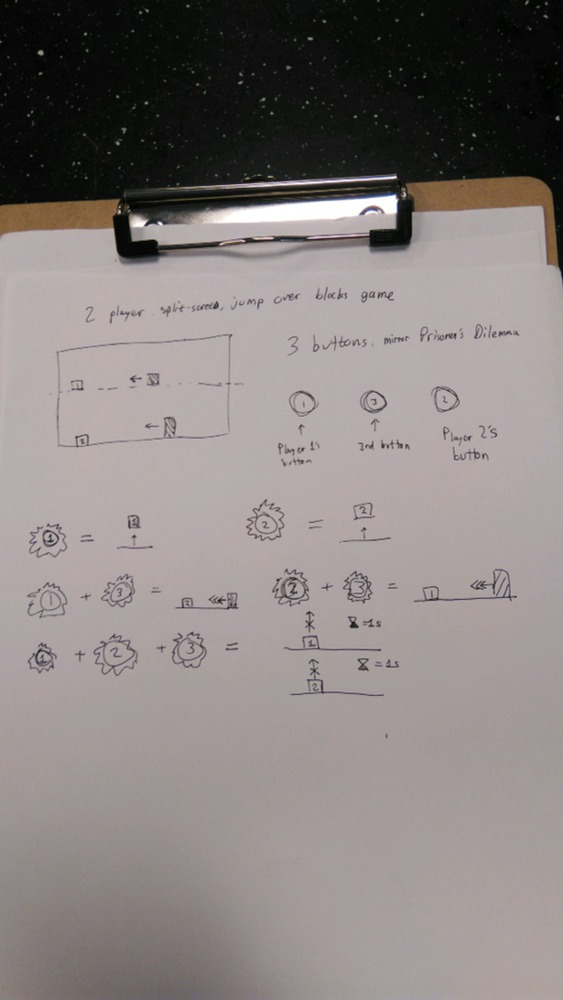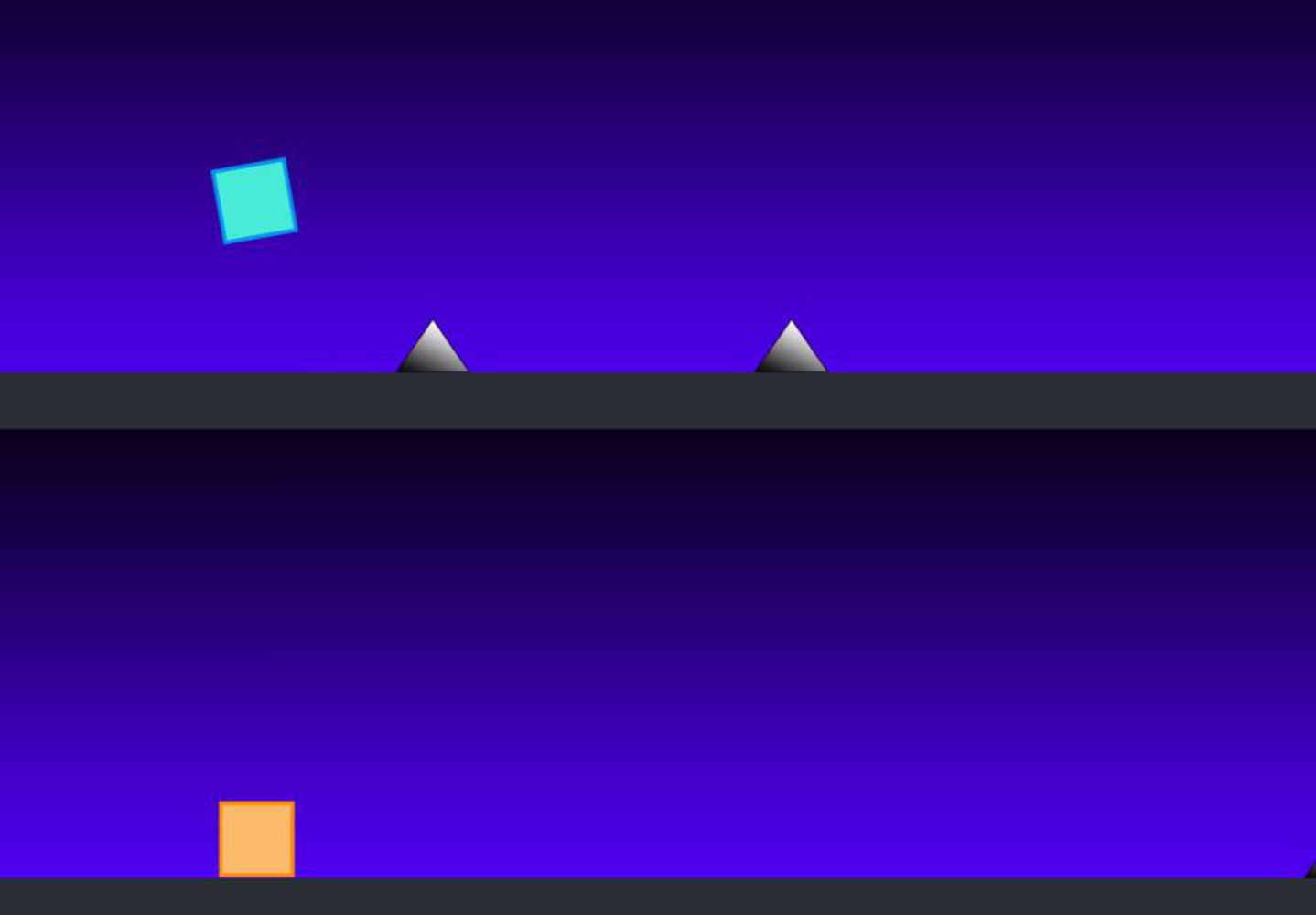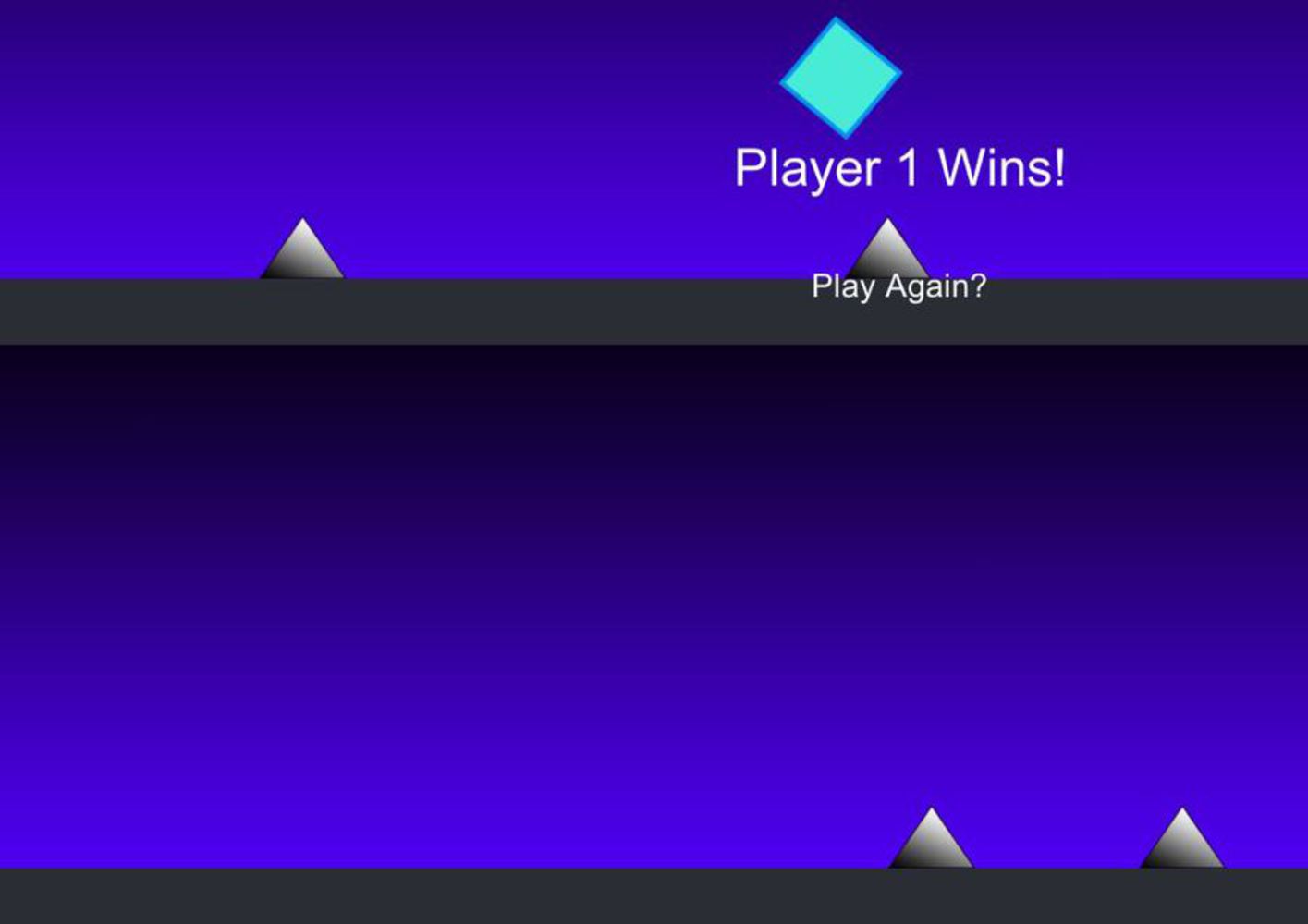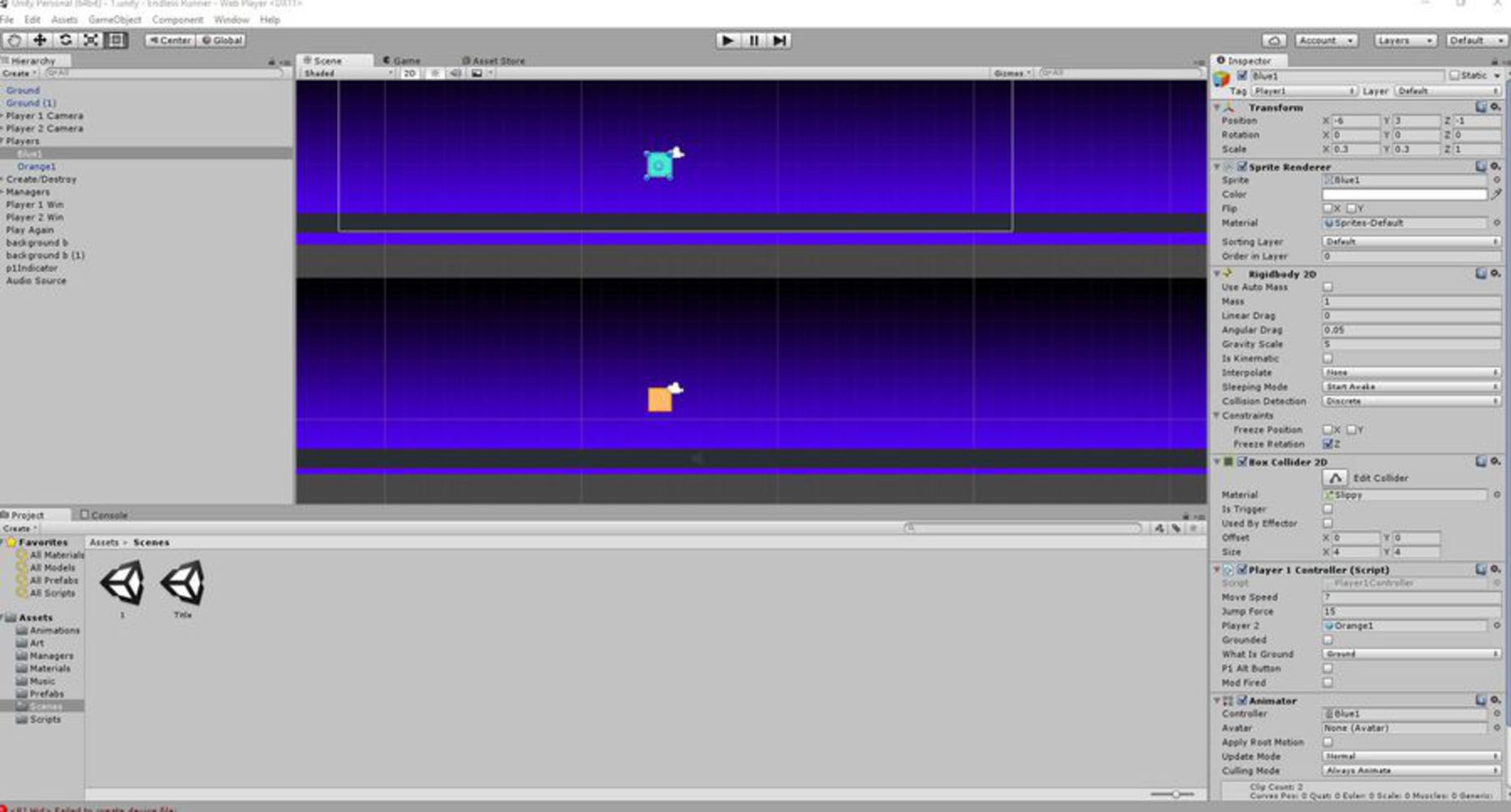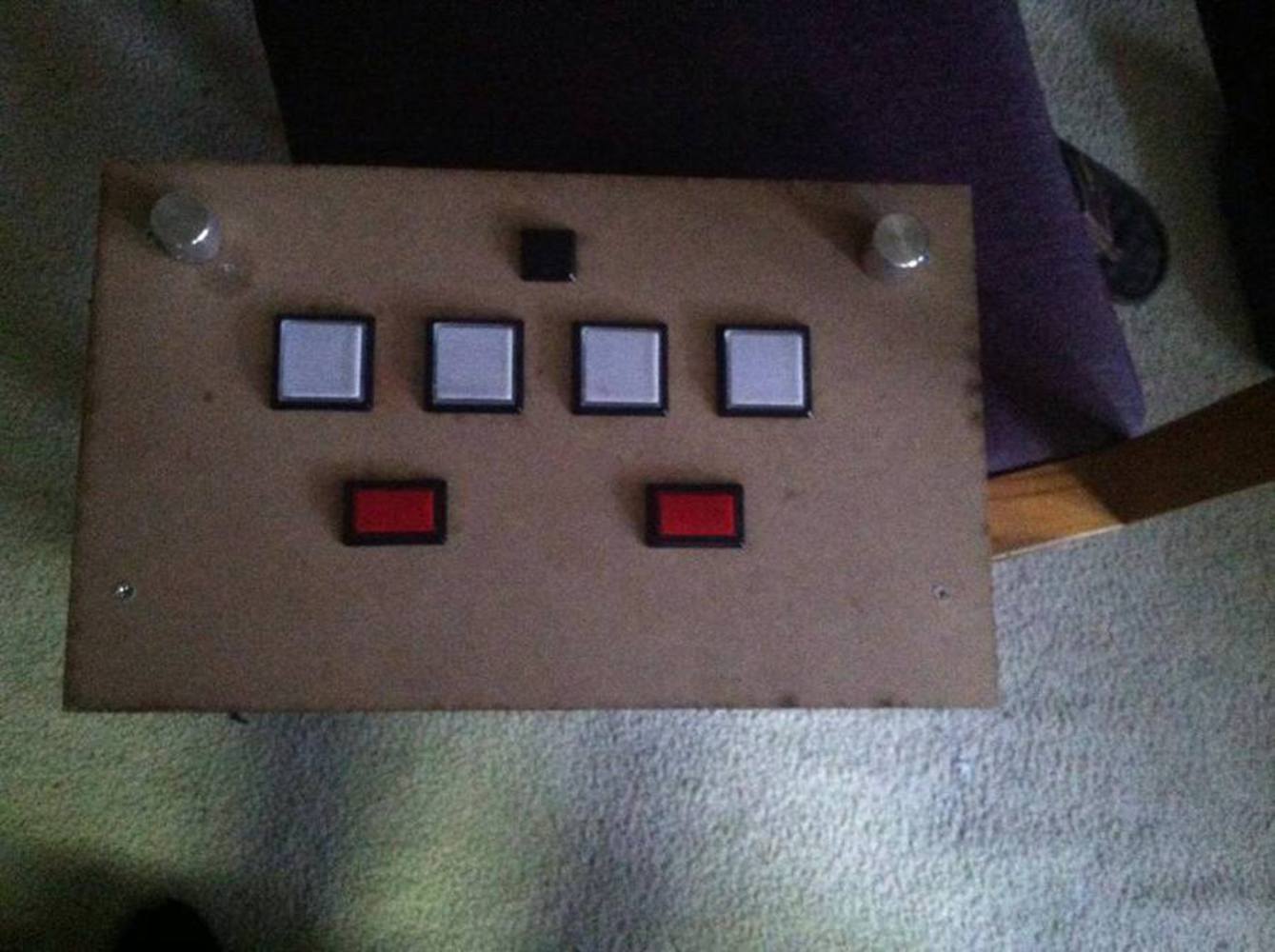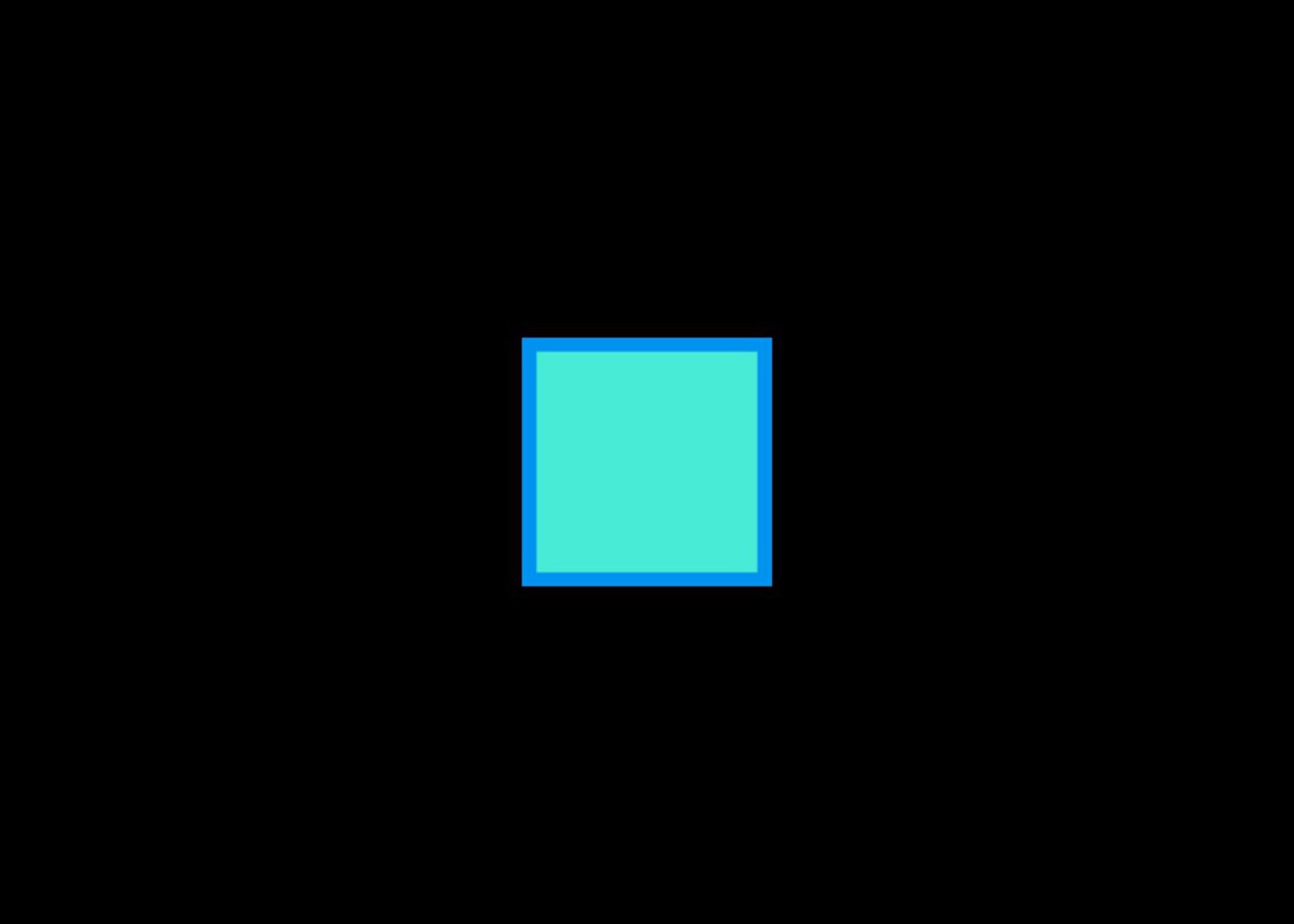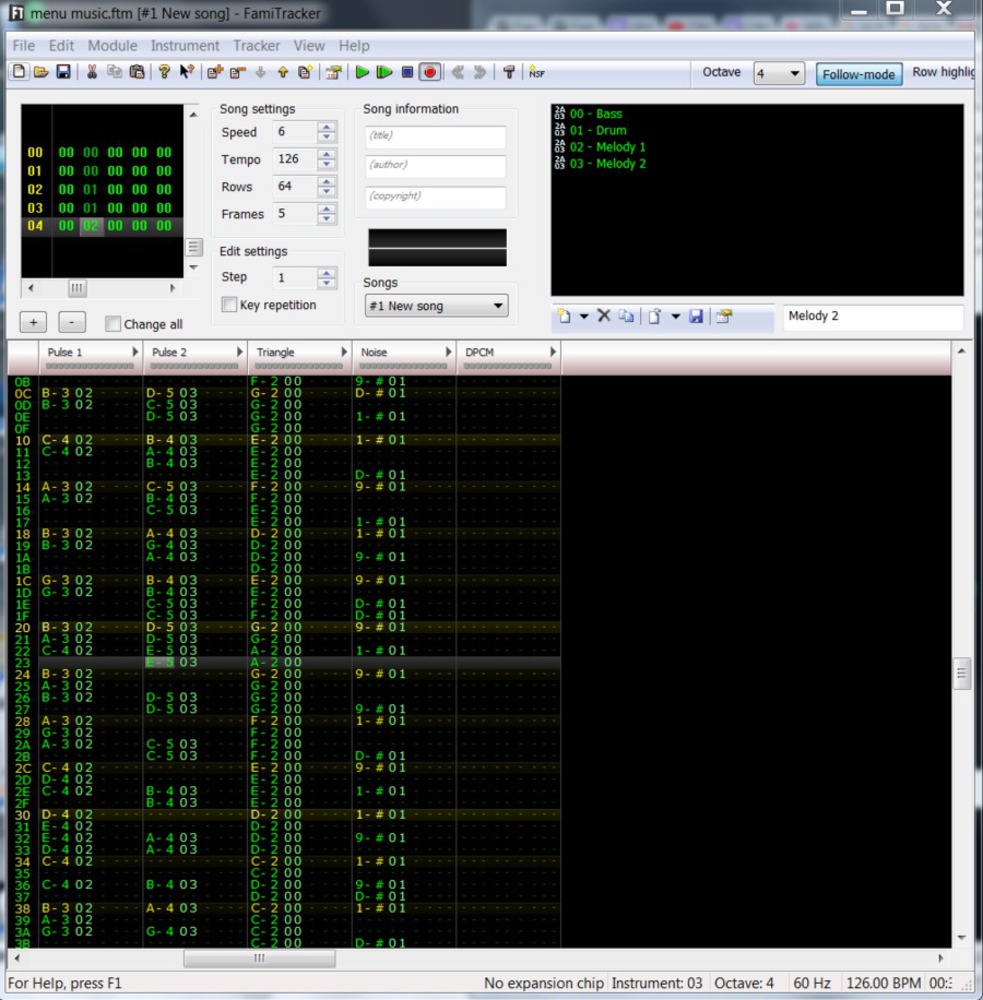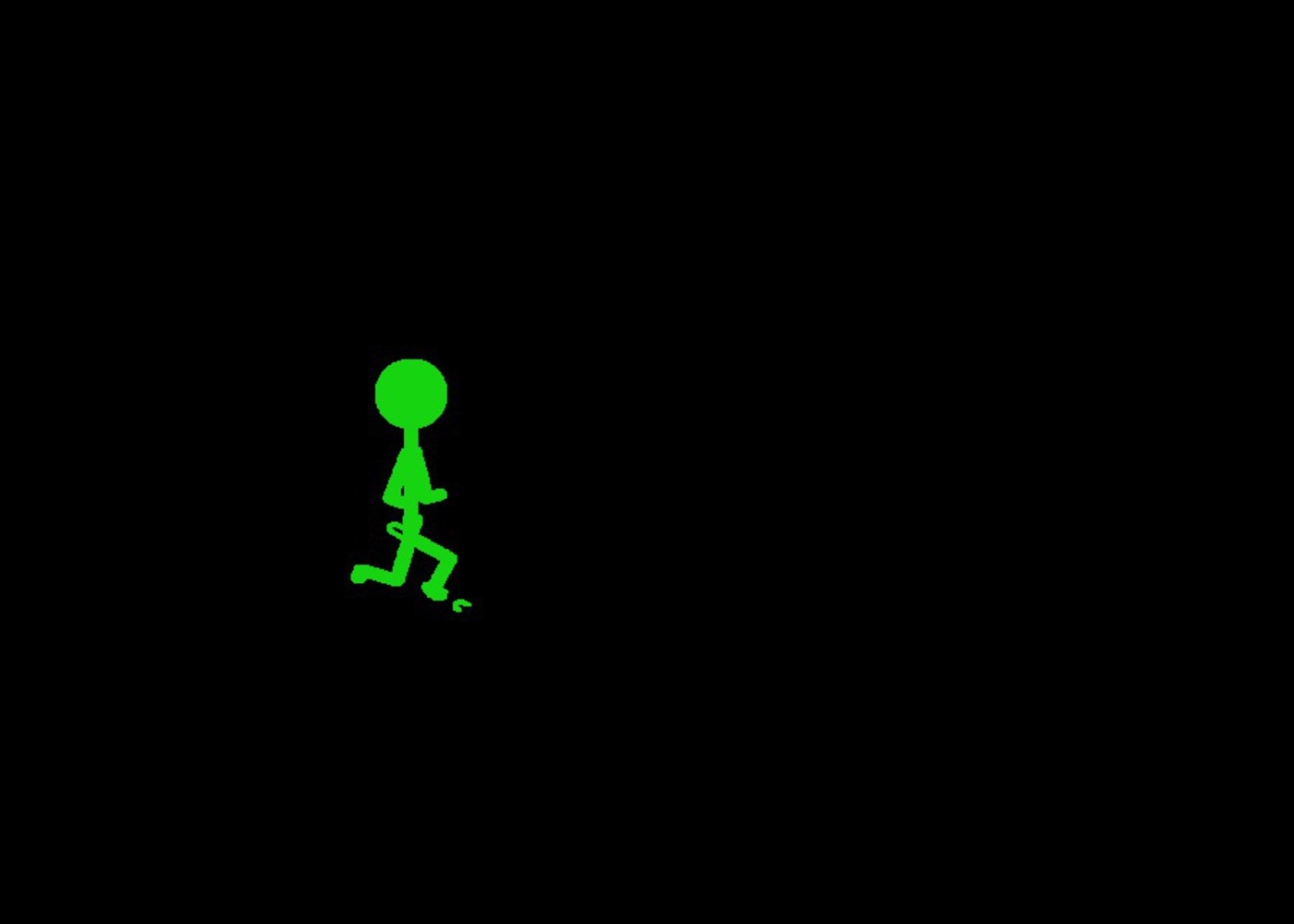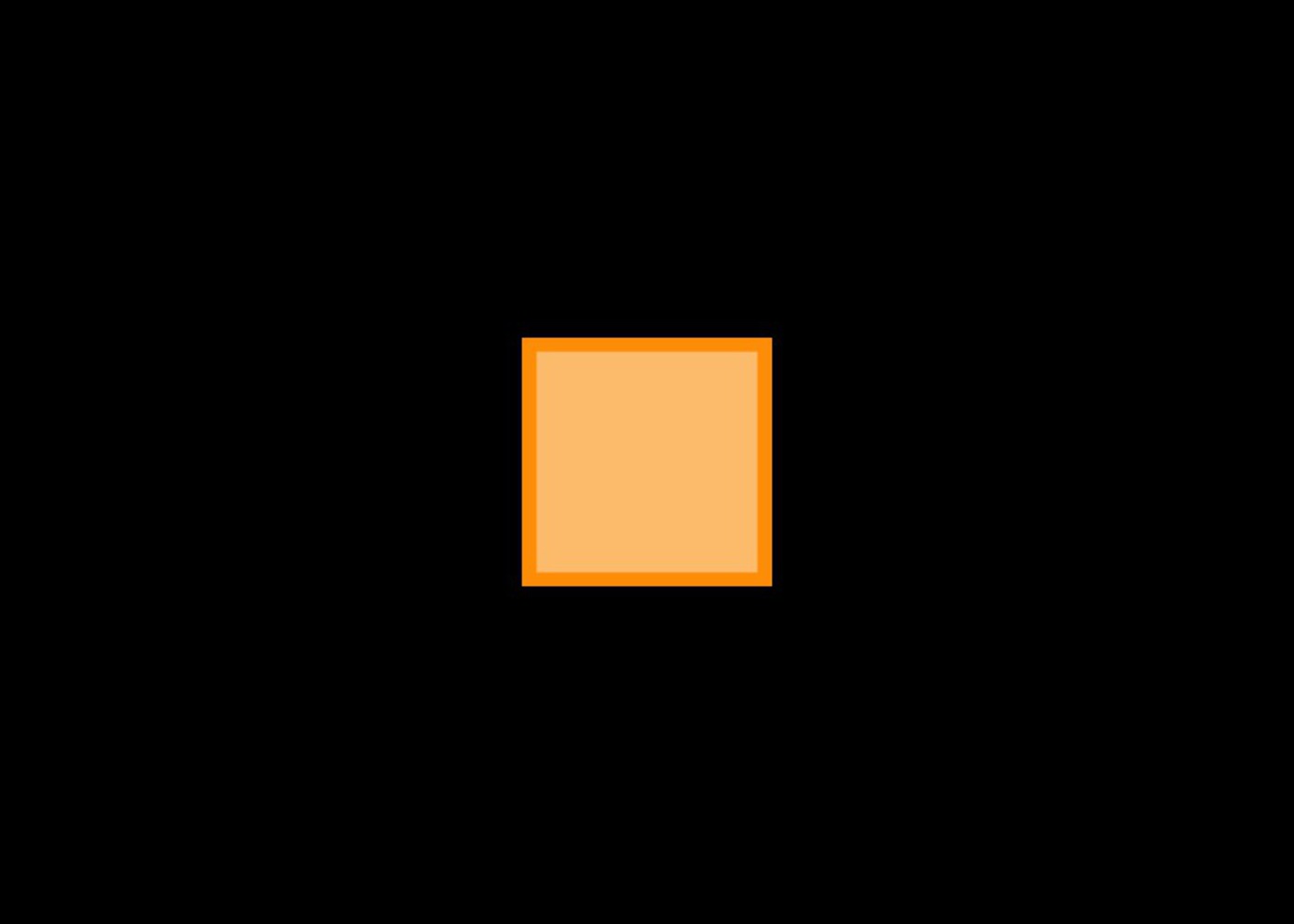Proposal
The idea behind our project was to create a simple game, because what more embodies the essence of a playground than games? Specifically, in this project, we wanted to capture the aspect of 'selfish' play on a playground, represented through game mechanics that mirror the 'Prisoner's Dilemma'. Play on a playground or even in a videogame is not all sunshine and cotton candy. Some people will prioritize their own enjoyment, even at the expense of others. A bully may destroy someone else's sandcastle, or a videogame player may 'grief' and harass others within the game. However, this is not without cost. We wanted to try and recreate this through fast-paced gameplay based around the 'Prisoner's Dilemma'. The Prisoner's Dilemma is as follows:
Two members of a criminal gang are arrested and imprisoned. Each prisoner is in solitary confinement with no means of communicating with the other. The prosecutors lack sufficient evidence to convict the pair on the principal charge. They hope to get both sentenced to a year in prison on a lesser charge. Simultaneously, the prosecutors offer each prisoner a bargain. Each prisoner is given the opportunity either to: betray the other by testifying that the other committed the crime, or to cooperate with the other by remaining silent. The offer is:
- If A and B each betray the other, each of them serves 2 years in prison
- If A betrays B but B remains silent, A will be set free and B will serve 3 years in prison (and vice versa)
- If A and B both remain silent, both of them will only serve 1 year in prison (on the lesser charge)
Gameplay will have two players on a split screen, jumping over a series of blocks coming towards them. The goal of the game is for one person to either make it to the end, or outlast the other. Each player has a button, which makes their avatar jump. However, there is a third, shared, button that when combined with a player's button, disrupts the other player's gameplay. The other player then has a set time in which if they press their own button, then both players will have their gameplay disrupted, possibly fatally.
